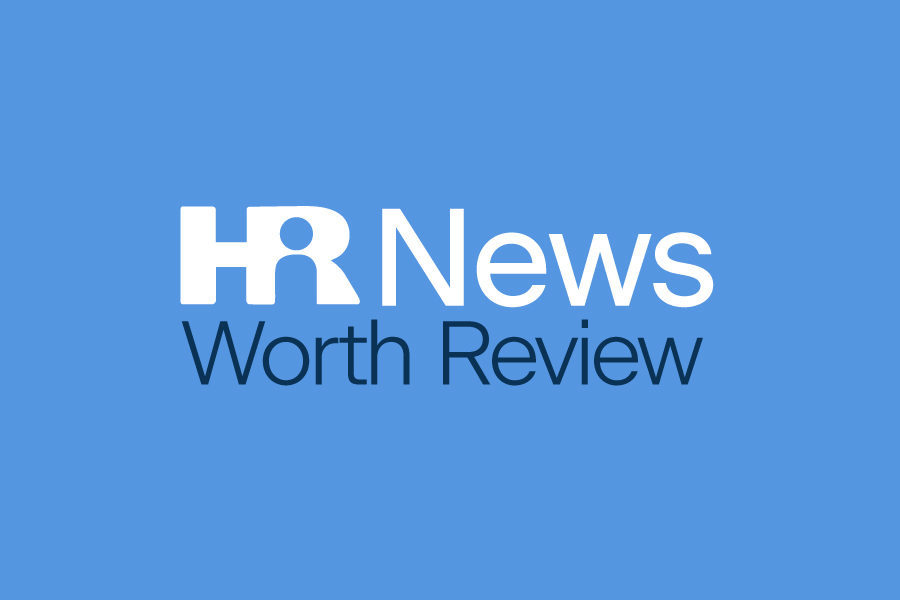Employers Should Start Preparing for 2024 RxDC Reporting
Group health plans and health insurance issuers must annually submit detailed information on prescription drug and health care spending to the Centers for Medicare & Medicaid Services (CMS). This reporting is referred to as the “prescription drug data collection” (or “RxDC report”). The next RxDC report is due by Saturday, June 1, 2024, covering data for 2023.
The RxDC report is comprised of several files, including those that require specific plan-level information, such as plan year beginning and end dates and enrollment and premium data. It also includes files that require detailed information about medical and pharmacy benefits.
Most employers contract with third parties, such as issuers, third-party administrators (TPAs) and pharmacy benefit managers (PBMs), to submit RxDC reports on behalf of their health plans. Employers may work with multiple third parties to complete the RxDC report for their health plans. For example, a self-insured employer may use both its TPA and PBM to submit different portions of the RxDC report. A health plan’s submission is considered complete if CMS receives all required files, regardless of who submits them.
Employer Takeaway
Employers should start reaching out to their issuers, TPAs or PBMs, as applicable, to confirm that they will submit the RxDC files for their health plans by June 1, 2024. Employers should also confirm that their written agreements with these third parties address this reporting responsibility.
Also, employers will likely need to provide their third-party vendors with plan-specific information, such as enrollment and premium data, to complete their RxDC submission. Employers should watch for these vendor surveys and promptly provide the requested information. Because employers with self-funded plans are ultimately responsible for RxDC reporting, they should monitor their TPAs’ or PBMs’ compliance with this reporting requirement
CMS Releases Cost-Sharing Limits for 2025 Plan Years
The Centers for Medicare and Medicaid Services (CMS) have released the maximum limits on cost-sharing for 2025 under the Affordable Care Act (ACA). For 2025, the maximum annual limitation on cost-sharing is $9,200 for self-only coverage and $18,400 for family coverage. This represents an approximately 2.6 percent decrease from the 2024 limits of $9,450 for self-only coverage and $18,900 for family coverage.
Out-of-Pocket Maximum
The ACA requires most health plans to comply with annual limits on total enrollee cost-sharing for essential health benefits (EHBs). These cost-sharing limits are commonly referred to as an out-of-pocket maximum. Once the out-of-pocket maximum is reached for the year, the enrollee cannot be responsible for additional cost-sharing for EHBs for the remainder of the year.
Under the ACA, EHBs must reflect the scope of benefits covered by a typical employer plan and must include items and services in 10 general categories, including emergency services, hospitalization, prescription drugs, pediatric services, outpatient care and maternity and newborn care.
CMS annually adjusts the ACA’s out-of-pocket maximum for inflation and publishes the limits by January of the year preceding the applicable benefit year. The ACA’s cost-sharing limits apply to all non-grandfathered health plans, including self-insured health plans, level-funded health plans and fully insured health plans of any size.
Any out-of-pocket expenses required by or on behalf of an enrollee with respect to EHBs must count toward the cost-sharing limit. This includes deductibles, copayments, coinsurance and similar charges but excludes premiums and spending for noncovered services. Health plans that use provider networks are not required to count an enrollee’s expenses for out-of-network benefits toward the cost-sharing limit. Also, the ACA requires health plans to apply an embedded out-of-pocket limit for everyone enrolled in coverage. Each enrollee must have an individual out-of-pocket limit on EHBs that is not higher than the ACA’s out-of-pocket maximum for self-only coverage.
These limits follow an employer’s plan year, not the calendar year. Therefore, for plan years beginning in 2024 (i.e. – on or after 1/1/24), the out-of-pocket maximum is $9,450 for self-only coverage and $18,900 for family coverage. For plan years beginning in 2025 (on or after 1/1/25), the limits are $9,200 and $18,400, respectively. As employers enter their renewal season, they should review the plan designs each year to ensure they comply with the ACA’s cost-sharing limits.
IRS Warning: HSAs, Health FSAs and HRAs Cannot Pay for Personal Health and Wellness Expenses
The IRS recently issued a bulletin to remind taxpayers that tax-advantaged medical savings accounts, such as health flexible spending accounts (FSAs) and health reimbursement arrangements (HRAs), cannot pay for personal expenses for general health and wellness. Similarly, health savings accounts (HSAs) cannot be used to pay for these personal expenses on a tax-free basis.
The IRS provided this reminder as a warning to taxpayers to beware of companies’ misrepresentation of when personal health expenses can be reimbursed by health FSAs, HRAs and HSAs.
Qualified Medical Expenses
Health FSAs, HRAs and HSAs can be used to pay out-of-pocket costs for qualified medical expenses that are not covered by a health plan. Qualified medical expenses must be incurred primarily to alleviate or prevent a physical or mental defect or illness. These expenses include payments for medical services rendered by physicians, surgeons, dentists and other practitioners. They include the costs of equipment, supplies and diagnostic devices needed for these purposes. They also include the costs of medicines and drugs prescribed by a physician. However, expenses that are merely beneficial to general health are not qualified medical expenses.
Nutrition, Wellness and General Health Expenses
The IRS maintains a set of FAQs addressing when costs related to nutrition, wellness and general health are qualified medical expenses. These FAQs clarify that these costs are qualified medical expenses only in narrow circumstances. For example:
- The cost of nutritional counseling or a weight-loss program is a qualified medical expense only if it treats a specific disease diagnosed by a physician (such as obesity or diabetes).
- The cost of nutritional supplements is a qualified medical expense only if the supplements are recommended by a medical practitioner as treatment for a specific medical condition diagnosed by a physician.
- The cost of weight-loss food or beverages is a qualified medical expense only if the food or beverage does not satisfy normal nutritional needs, the food or beverage alleviates or treats an illness and the need for the food or beverage is substantiated by a physician. The medical expense is limited to the amount by which the cost of the food or beverage exceeds that of a product that satisfies normal nutritional needs.
- The cost of exercise for the improvement of general health, such as swimming or dance lessons, is never a qualified medical expense (even if recommended by a doctor).
- The cost of a gym membership is a qualified medical expense only if the membership was purchased for the sole purpose of affecting a structure or function of the body (such as a prescribed plan for physical therapy to treat an injury) or for the sole purpose of treating a specific disease diagnosed by a physician (such as obesity, hypertension or heart disease).
The IRS cautions taxpayers to beware of companies misrepresenting nutrition, wellness and general health expenses as qualified medical expenses that can be reimbursed by a health FSA, HRA or HSA. According to the IRS, some companies mistakenly claim that notes from doctors based merely on self-reported health information can convert nonmedical food, wellness and exercise expenses into qualified medical expenses.
The IRS provides the following example of this type of situation: A man with diabetes decides to eat foods that are lower in carbohydrates in an attempt to control his blood sugar. He sees an advertisement from a company stating that he can use pre-tax dollars from his health FSA to purchase healthy food if he contacts that company. He contacts the company, who tells him that for a fee, the company will provide him with a “doctor’s note” that he can submit to his FSA to be reimbursed for the cost of food purchased in his attempt to eat healthier. However, when he submits the expense with the “doctor’s note,” the claim is appropriately denied because food is not a qualified medical expense.
Employer Takeaway
Employers that sponsor HRAs, HSAs or FSAs may want to take this opportunity to remind their employees what are and are not eligible medical expenses allowed under these types of tax-favored plans. Our partners at the FSA/HSA store have a fantastic searchable list of which items are eligible, which are eligible with a Letter of Medical Necessity (LMN) and which are ineligible.
Final Reminder – Employers Must File ACA Returns Electronically by April 1, 2024
The Affordable Care Act (ACA) created reporting requirements under Internal Revenue Code (Code) Sections 6055 and 6056. Under these rules, certain employers must provide information to the IRS about the health plan coverage they offer (or do not offer) to their employees. Under the original rules, any reporting entity that was required to file at least 250 individual statements under Sections 6055 or 6056 had to file electronically. However, on Feb. 23, 2023, the IRS released a final rule implementing a law change by the Taxpayer First Act of 2019, which lowers the 250-return threshold for mandatory electronic reporting to 10 returns. This means most reporting entities will be required to complete their ACA reporting electronically starting this year.
Employer Takeaway
Employers that have not requested an extension or an electronic filing waiver and that are subject to the ACA reporting rules should be exploring options for filing ACA reporting returns electronically to ensure filing is completed by the April 1, 2024, deadline. For example, they may be able to work with a third-party vendor to complete the electronic filing.





